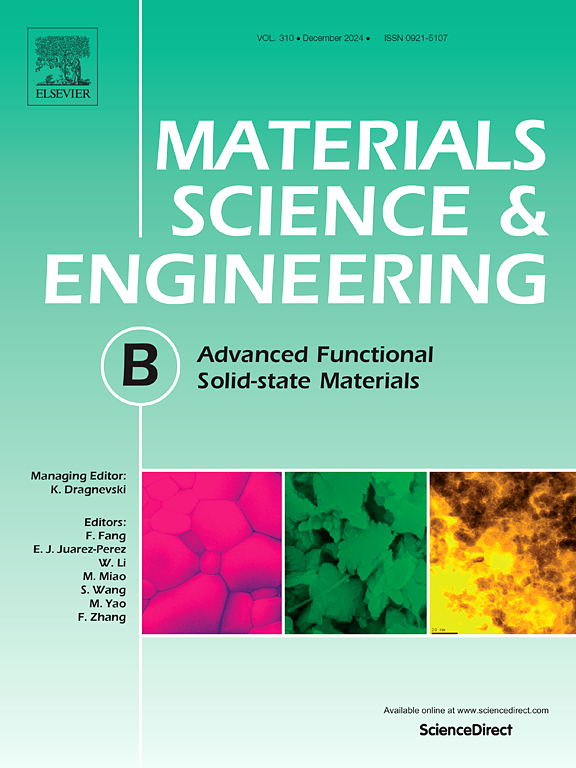Investigating the synergistic effects of manganese sesquioxide and magnetite nanocomposites on magnetic hyperthermia efficiency
IF 4.6
3区 材料科学
Q2 MATERIALS SCIENCE, MULTIDISCIPLINARY
引用次数: 0
Abstract
A systematic investigation explored the potential of manganese sesquioxide, combined with magnetite nanoparticles, for hyperthermia applications and its in vitro efficacy against targeted A-549 cells. The nanoparticles were synthesized by the co-precipitation technique followed by solid-state synthesis, yielding nanocomposites with varying weight ratios of Mn2O3 (10–40 wt%). The structural and morphological characteristics were evaluated using XRD and HRTEM, revealing a single-phase cubic structure and nanoparticles with spherical or rod-shaped morphologies. Magnetic measurements by VSM exhibited superparamagnetic behaviour with low coercivity. Induction heating analysis revealed a higher specific absorption rate of 346 W/g for 10 wt% Mn2O3. The dose–response analysis showed that 10 wt% Mn2O3 nanocomposites elicited an IC50 value of 30 μg/mL, with a favourable selectivity index of 2.01, underscoring their remarkable capacity for inhibiting cellular proliferation. This comprehensive study provides valuable insights into the synthesis, characterization, hyperthermia performance, and in vitro study of Mn2O3/Fe3O4 nanocomposites, highlighting their potential as efficient theranostic agents for lung cancer cells.

研究半氧化锰和磁铁矿纳米复合材料对磁热疗效率的协同效应
一项系统的研究探索了倍半氧化锰与磁铁矿纳米颗粒联合用于热疗的潜力及其对靶向A-549细胞的体外疗效。采用共沉淀法合成纳米颗粒,然后采用固态法合成,得到了不同重量比(10-40 wt%)的纳米复合材料。利用XRD和HRTEM分析了纳米颗粒的结构和形态特征,发现其为单相立方结构,颗粒形貌为球形或棒状。VSM的磁测量表现出低矫顽力的超顺磁性行为。感应加热分析表明,10 wt% Mn2O3的比吸收率为346 W/g。剂量效应分析表明,10 wt% Mn2O3纳米复合材料的IC50值为30 μg/mL,选择性指数为2.01,表明其具有显著的抑制细胞增殖的能力。这项综合研究为Mn2O3/Fe3O4纳米复合材料的合成、表征、热疗性能和体外研究提供了有价值的见解,突出了它们作为肺癌细胞有效治疗药物的潜力。
本文章由计算机程序翻译,如有差异,请以英文原文为准。
求助全文
约1分钟内获得全文
求助全文
来源期刊

Materials Science and Engineering: B
工程技术-材料科学:综合
CiteScore
5.60
自引率
2.80%
发文量
481
审稿时长
3.5 months
期刊介绍:
The journal provides an international medium for the publication of theoretical and experimental studies and reviews related to the electronic, electrochemical, ionic, magnetic, optical, and biosensing properties of solid state materials in bulk, thin film and particulate forms. Papers dealing with synthesis, processing, characterization, structure, physical properties and computational aspects of nano-crystalline, crystalline, amorphous and glassy forms of ceramics, semiconductors, layered insertion compounds, low-dimensional compounds and systems, fast-ion conductors, polymers and dielectrics are viewed as suitable for publication. Articles focused on nano-structured aspects of these advanced solid-state materials will also be considered suitable.
 求助内容:
求助内容: 应助结果提醒方式:
应助结果提醒方式:


